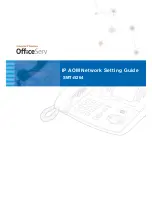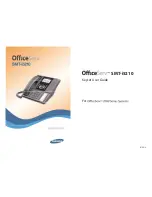
10
b. Ademco High Speed Format
This DTMF format consists of a four digit account code, eight zone codes and one alarm type digit. With this
format you can identify up to eight different phones by using a zone per phone. A “5” in a zone position means
no alarm. The following example shows an alarm from the third phone.
2. Central Station Formats
The following examples explain the receiver formats and how to properly program memory location
#20
. Each for-
mat starts with a four digit account code. This is the code that is assigned by your central station for billing purpos-
es. You must access the programming mode before programming these features (see
Programming
section
A
).
Important:
If a number is shown, you must use that number. If an “
X
” is shown, use any appropriate number.
Note:
A second information alarm message can be sent to the receiver, for any receiver that requires two separate
messages. The second alarm message is programmed in
#21
location. For additional information about the second
alarm message, see
Operation
section
B
.
a. Ademco Contact ID Format
This DTMF format consists of a four digit account code, two digit message type, and a nine digit data field.
Account Code
Message Type
New Event
XXXX 18 1 14000 XXX #20
Memory Location
Any number to identify phone
General Alarm
Enter Contact ID Settings Here:
18 1 14000
#20
The
1600A
Series phone can be programmed to dial a central station receiver only, or dial up to 5 voice num-
bers first, and if no answer, then dial the central station receiver. When calling the first numbers (memory posi-
tions
#00-#04
(see
Programming
section
D
), the phone stays in “two-way talk mode” allowing two-way con-
versation. When calling the Central Station number (memory position
#05
), the phone is in a “listen only mode”
in order to interpret the hand shake signals of the receiver.
A second central station number position has been provided in location
#06
that is used when the central sta-
tion receiver does not have a talk over mode. If a number is
placed in position
#05
and position
#06
is cleared, the
E-
1600A
will call the central station monitor receiver. One or
two alarm messages can be sent to the receiver (see
Operation
section
B
, note
3
). After the receiver sends a kiss-
off, the
E-1600A
lights the “Call Connected” LED and goes
into two-way talk mode. If numbers are in both positions
#05
and
#06
, the
E-1600A
will call the receiver first, and after the
kiss-off, will hang-up and redial the number in position
#06
for
two-way voice communication
Notes:
If only a central station is to be dialed, the central sta-
tion phone number must be preprogrammed in memory loca-
tion
#05
and memory locations
#00-#04
must be cleared.
d. Speed Dial Numbers
Location
#00
#01
#02
#03
#04
#05
#06
#07
#08
#09
Call Type
Voice - Emergency
Voice - Emergency
Voice - Emergency
Voice - Emergency
Voice - Emergency
Central Station Receiver
Central Station Voice Line
Voice - “Info” (
E-1600-20A/52A
only)
Voice - “Info” (
E-1600-20A/52A
only)
Voice - “Info” (
E-1600-20A/52A
only)
Account Code
Idle Zones
Alarmed Zone
XXXX 55155555 7 #20
Memory Location
Normal Alarm
Idle Zones
Enter Ademco High Speed ID Settings Here:
55155555 7 #20






























